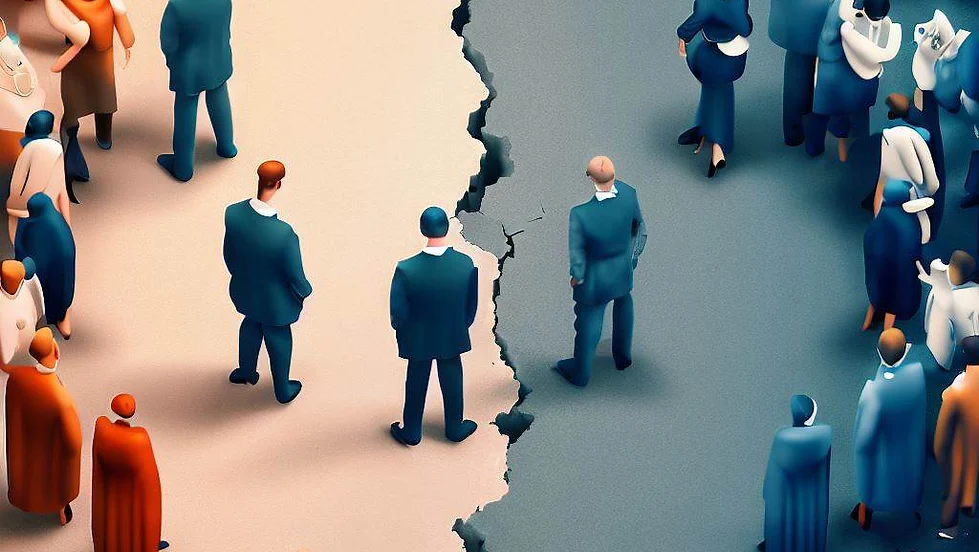
Times of crises often call for strong and rapid action, but in polarized societies, strong top-down policies can backfire.
In a paper published on June 17, 2024, in Environmental Research Letters, SFI Applied Complexity Fellow Saverio Perri, SFI Science Board Fellow Simon Levin (Princeton University), and colleagues present a conceptual model of how these dynamics could play out in efforts to decarbonize our energy supply. The model illustrates the complex interplay between strong policies, people’s perception of risk, and the amount of polarization in a society. They show that in situations where the perception of risk is low — where the threat does not feel immediate or particularly dangerous — and opinion polarization is high, strong policy mandates can potentially worsen the long-term outcomes.
It’s a dynamic we saw play out in real-time throughout the COVID-19 pandemic. As policymakers took measures to slow transmission of the disease, the global perception of risk was very high. But as masks and lockdowns worked to curb the spread of the virus, our perceived risk declined; mandates lifted, individuals opted out, and case numbers rose again, often surpassing earlier surges.
Perri et. al’s new model suggests that a similar rebound could happen with policies to encourage a transition to low-carbon energy. Say the global community invested heavily in renewable-energy infrastructure in response to the damaging effects of climate change. If those investments were strong enough to reduce the damages, our human tendency would be to lower our guard. Perri and Levin’s model suggests that, in more polarized societies, this could trigger moves to reinvest in fossil fuels. “In this scenario, you have a very strong, effective policy, and that’s good,” says Perri. “But at the same time, in the long term, it’s ineffective.”
The model shows that, in highly polarized situations, social interactions — behaviors that reinforce dominant norms — can lead to a phase shift where an initial state-change can happen quickly, but subsequent transitions become harder. “It’s a double-edged sword. In one sense, it can accelerate a transition. But at the same time, it can make the threshold for that transition harder to meet,” says Perri. “It’s beneficial if public opinion tends to favor a transition toward a sustainable state, but it’s clearly detrimental if there is a general consensus to maintain the unsustainable status quo or move toward a degraded state.”
These dynamic elements of human behavior aren’t included in climate models, but they should be, says Perri. “Our model is not predictive. But we can use it to understand how the dynamics of the system work,” he says. “What we find is that the perception of risk and the impact of opinions on climate mitigation actions are extremely important.” The authors hope that more climate models — and the policy decisions they might inspire — will consider these human–social feedbacks in the future.

